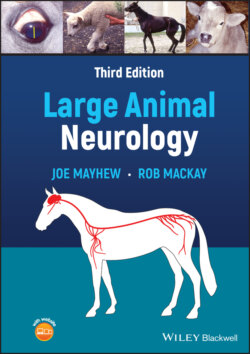Читать книгу Large Animal Neurology - Joe Mayhew - Страница 96
Toxic diseases
ОглавлениеSome toxins such as cyanide interfere with oxygen transport. Water and salt intoxications directly alter osmolality of cells, interrupting many metabolic functions associated with swelling or shrinking cells. Lesions, if present, are usually symmetrical, often diffuse and usually end with tissue necrosis, sometimes with subsequent brain swelling (Figure 4.8). Some plant (e.g., yellow star thistle) and microbial (e.g., Clostridium perfringens type D) toxins produce extremely selective and focal lesions, suggesting that they are mediated by selective neurotransmitter disruption or more likely by selective vascular derangements.
Some such as botulinum toxins affect neurotransmission directly while others like lolitrem‐B in perennial ryegrass staggers interfere with membrane ion channels resulting in an acquired channelopathy.
And finally, other toxins interfere with (macro)molecular biosynthesis as occurs with corynetoxins in annual ryegrass toxicity disrupting glycoprotein synthesis, and fumonisins in equine leukoencephalomalacia/moldy corn poisoning disrupting sphingolipid metabolism.
